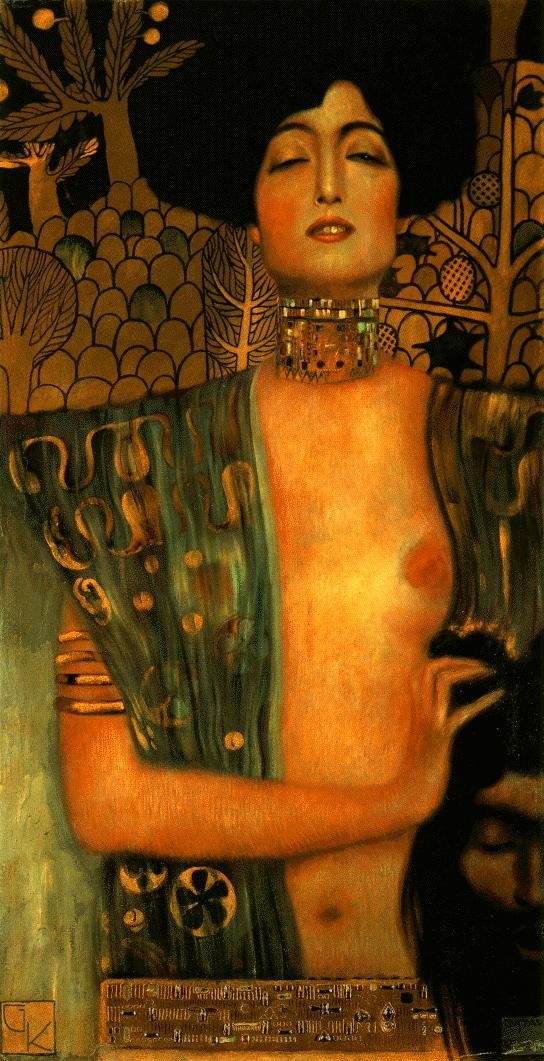art-Klimt.com
Gustav Klimt 1862-1918
Gustav Klimt - Judith and the Head of Holofernes 1901
 Judith and the Head of Holofernes |
From Wikipedia, the free encyclopedia:
Judith and the Head of Holofernes (also known as Judith I) is an oil painting by Gustav Klimt created in 1901. It depicts the biblical character of Judith holding the severed head of Holofernes.
When Klimt tackles the biblical theme of Judith, the historical course of art has already codified its main interpretation and preferential raffiguration. In fact, many paintings exist, describing the episode in a heroic manner, especially expressing Judith's courage and her virtuous nature. Judith appears as God's instrument of salvation, but the violence of her action cannot be denied and is dramatically shown in Caravaggio's rendering, as well as those of Gentileschi and Bigot. Other representations have chosen the subsequent moment, when a dazed Judith holds Holofernes' severed head, as Moreau and Allori anticipate in their suggestive mythological paintings.
Klimt deliberately ignores any narrative reference whatsoever, and concentrates his pictorial rendering solely on to Judith, so much so that he cuts off Holofernes' head at the right margin. And there is no trace of bloodied sword, as if the heroine would have used a different weapon: an omission that legitimates association with Salome. The moment preceding the killing — the seduction of Nebuchadnezzar's general — seems to coalesce with the conclusive part of the story.
Judith I reveals a curious symbolic and compositional consonance with The Sin by Franz Stuck: the temptation illustrated by the German painter becomes the model for Klimt's femme fatale by suggesting the posture of the disrobed and evanescent body as focal piece of the canvas, as well as the facial set. Judith's force originates from the close-up and the solidity of posture, rendered by the orthogonal projection of lines: to the body's verticality (and that of Holofernes') corresponds the horizontal parallels in the lower margin: those of the arm, the shoulders joined by the collier, and finally the hair base.